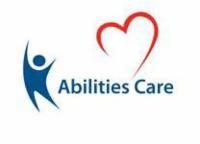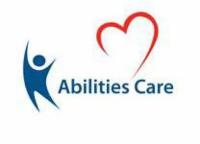Symptomless CVAs?
By Lisa Harvey, M.S./CCC-SLP, Documentation Review Resource
A pattern that our PDPM deep diving partners have found is hospital document and/or therapy documentation that reports a history of CVA that then goes…nowhere. Despite this history, no residual speech, language, swallowing, cognitive or neuromotor findings are reported in the therapy assessments (or anywhere else). Yet according to the National Stroke Association, only 10% of people who have a stroke will make complete neurological recovery. This means that many individuals with long-term sequela are going unidentified in our setting.
According to the CDC, the most common long-term symptoms after a CVA include hemiplegia, cognitive impairments, speech and language impairments, dysphagia, incontinence and depression. Most of those symptoms, when properly identified and managed, will trigger PDPM components.
Step 1: Identify the sequela.
Obvious hemiparesis, dysphagia or aphasia will seldom be overlooked. But even minimal impairments can affect a patient’s balance, skin integrity, weight, mood and cognition. It’s critical that when a CVA history is present that the most sensitive assessments are completed to ensure that subtle impairments in symmetrical strength, righting response, complex reasoning, word retrieval, mood or swallowing are not missed.
Step 2: Identify how the patient is impacted.
It’s very unlikely that a long-term residual sequela doesn’t impact the patient’s function, the therapy treatment plan, or both. In addition to therapeutic interventions that may be need to be incorporated into the specific therapy treatment plans, the ways they impact a patient’s function should be part of the patient’s comprehensive care plan. Here are some examples:
• Hemiparesis that affects gait stability or righting response should be careplanned under fall risk management.
• Hemiparesis that affects sensation should be careplanned under skin intergrity.
• Hemiparesis that causes joint instability should be careplanned under risk for injury.
• Apraxia can affect ADL function, gait stability or speech and should be careplanned in the appropriate area.
• Aphasia or dysarthria that effects either comprehension or expression should be careplanned under risk for communication breakdown.
• Dysphagia that requires any degree of adaptation (including supervision or compensatory swallowing technique) should be careplanned under nutritional risk.
The better the assessment, the better the patient’s therapy and care plan can be customized to their needs. The more patient-focused the care, the better the patient will respond to it. And an extra bonus is that CMS recognizes the impact that long term neurologic sequela have on a patient’s care and they’ll reimburse accordingly. So we call that a win!




 she met her now husband, Jan. An interesting fact is that UOP had the same number of students as the entire town of Willits. Despite the crowd, Avenlea loved her experience there and had great clinical exposure with patients beginning in her junior year.
she met her now husband, Jan. An interesting fact is that UOP had the same number of students as the entire town of Willits. Despite the crowd, Avenlea loved her experience there and had great clinical exposure with patients beginning in her junior year.
 Here at Golden Acres in Dallas, Texas, we love our long-term care residents. They are the heart and soul of our facility, and we wouldn’t have it any other way. One of our residents passed away recently, and it never gets easier. The family reached out to myself, the DOR, and the social worker in hopes of getting a copy of her grandmother’s life storyboard that was created during therapy with one of our amazing speech therapists. Her granddaughter wanted to utilize this resident’s life storyboard to aid in writing her obituary. To think that the Abilities Care Approach Program could, in such a trying and upsetting time, bring joy and meaning to a grieving family is truly amazing.
Here at Golden Acres in Dallas, Texas, we love our long-term care residents. They are the heart and soul of our facility, and we wouldn’t have it any other way. One of our residents passed away recently, and it never gets easier. The family reached out to myself, the DOR, and the social worker in hopes of getting a copy of her grandmother’s life storyboard that was created during therapy with one of our amazing speech therapists. Her granddaughter wanted to utilize this resident’s life storyboard to aid in writing her obituary. To think that the Abilities Care Approach Program could, in such a trying and upsetting time, bring joy and meaning to a grieving family is truly amazing.